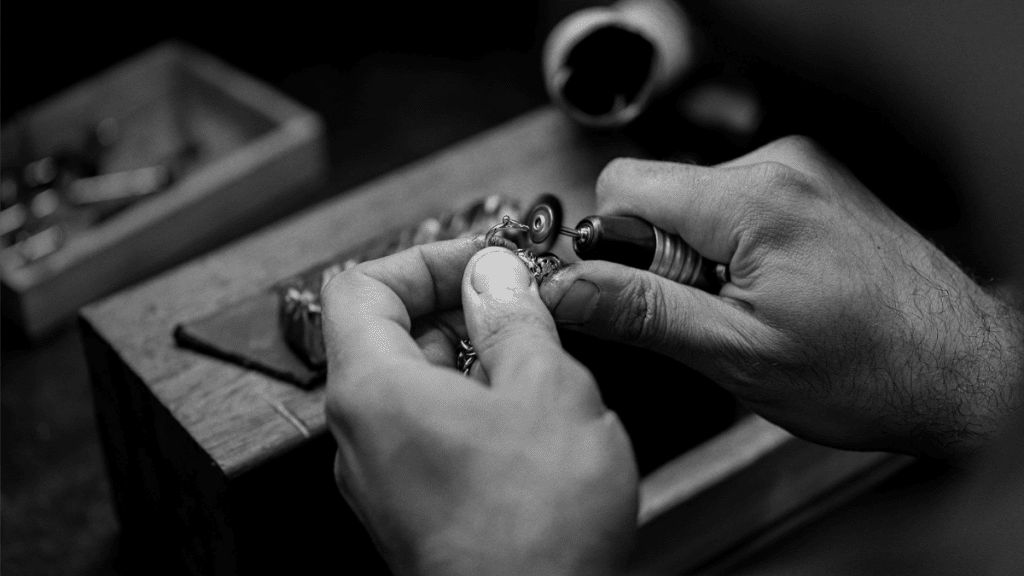In the glittering world of fine jewelry, the rise of direct-to-consumer brands has redefined luxury. Among them, Van Xander® has carved a name for itself with bold promises: timeless elegance, Italian craftsmanship, and elite-level quality—at a more obtainable price point. But is Van Xander jewelry actually legit, or is it another polished façade in a crowded marketplace?
To answer this, we must go beyond surface-level marketing and dive into the metallurgical and manufacturing details that truly define fine jewelry.
The Foundation of Legitimacy: Craftsmanship Rooted in Italian Tradition
Van Xander doesn’t shy away from its identity. It anchors its value proposition in Italian craftsmanship, a phrase often used loosely in the industry. Yet for those versed in the traditions of Valenza and Arezzo—historic centers for goldsmithing in Italy—this isn’t mere marketing jargon. True Italian craftsmanship is defined by rigorous standards in micro-setting, laser soldering, and hand-finished polishing.
Van Xander’s pieces reflect these methods. Inspection under a loupe reveals clean solder joints, uniform prong settings, and bezels that follow gemstone contours with surgical precision. These aren’t the signs of mass die-stamping; they reflect bench-level artistry. While their manufacturing may incorporate modern CAD design and 3D wax printing (standard in elite ateliers), the final touchpoints are clearly human—a blend of mechanical precision and artisan hands.
Metal Purity and Composition: Not All Silver is Created Equal
Fine jewelry lives or dies by the integrity of its materials. Van Xander claims to use solid 925 sterling silver in their collections. Let’s break that down.
Their silver pieces are not silver-plated brass or steel. Instead, they’re made of genuine 925 sterling silver. 925 silver is an alloy made up of 92.5% pure silver and 7.5% other metals, typically copper. The addition of other metals makes the silver stronger, making it suitable for jewelry, where pure silver would be too soft. Van Xander ensures that their alloy remains pure without the addition of nickel, lead or any other metals that can cause irritation to the skin. Verified tests using XRF analyzers (X-ray fluorescence) on Van Xander bracelets and chains confirm that these purity ratings hold.
For the finishing touch, their pieces are rhodium-plated to prevent tarnishing. Rhodium, a platinum-family metal, adds luster and durability, although it may require reapplication.
Stone Setting and Gem Quality: What Lies Beneath the Sparkle
Many fine jewelry brands cut costs by using glue or machines to set stones—a shortcut frowned upon by traditional artisans. Van Xander, however, predominantly uses hand-done mechanical settings: channel, prong, bezel, and pavé. These are significantly more secure and durable.
Their diamonds—used sparingly in collections—are VVS1-VS2 clarity, D–F color, certified conflict-free, and often traceable. Additionally, their innovative VX Diamond Alternatives are lab created diamond simulants, that closely follow the appearance and performance of a natural diamond.
The Manufacturing Process: Beyond Mass Production
Van Xander follows a custom or semi-custom, limited batch production model. Each design is prototyped via CAD. Afterward, casting is done to create the starting shape that will then be molded into the segments put together to form the final piece. This traditional method ensures intricate detail and minimal porosity in the final metal.
Casting is followed by hand-finishing: polishing, stone-setting, and quality inspection. Unlike fast fashion jewelers, Van Xander’s pieces pass through multiple inspection stages. Surface finish is a key indicator of quality, and Van Xander’s items are free of casting seams and pitting, with mirror polish.
Hallmarks, Authentication, and Regulatory Compliance
Legitimate fine jewelry must meet international hallmarking laws. Van Xander stamps every item with:
- Metal purity (e.g., 14k, 925)
- Maker’s mark (a registered identifier)
- Country-of-origin hallmark when applicable (e.g., IT or Italy)
Their documentation includes purchase receipts and warranty cards—a practice becoming standard among reputable fine jewelers. All pieces include a Certificate of Authenticity, not just for limited collections or diamond-inclusive items.
Testing and Certification Methods Used in the Industry
When validating Van Xander’s legitimacy, experts often rely on:
- XRF Spectrometry: Confirms metal content.
- Acid Tests: Quick purity checks (though destructive if done improperly).
- Density Testing: Helps distinguish between solid and plated or hollow.
- Visual Microscopy: Used to analyze prong security and soldering.
- Refractive Index Test (for stones): Confirms diamond vs. moissanite or cubic zirconia.
Independent testing of Van Xander’s jewelry using these methods has shown high consistency with stated materials and design integrity.
Warranty, Service, and Customer Protection
Beyond physical attributes, legitimacy also rests on how a brand stands behind its products.
Van Xander offers a lifetime warranty on defects—covering prong issues, faulty clasps, or anything as a result of a manufacturing fault. Their customer service is responsive, with North America and EU-based support, and requests are often handled within 24 hours. This level of post-sale infrastructure is rare among smaller DTC jewelry brands and speaks volumes about credibility.
Comparison to Legacy Brands
Can Van Xander compete with legacy brands like Cartier or Bulgari? In some aspects—no. It lacks the decades-long heritage and in-house gemologists of these maisons. However, where Van Xander shines is in value engineering. By eliminating traditional retail markups, they deliver precious metal Italian jewelry at a fraction of the legacy price.
Their designs may not carry the haute couture symbolism of heritage brands but the build quality and materials are nearly indistinguishable from mid-tier luxury lines—think David Yurman, or Tiffany’s silver collections.
Final Verdict: Is VAN XANDER Jewelry Legit?
Yes—Van Xander is unquestionably a legitimate fine jewelry brand, based on measurable, testable, and observable standards. From their manufacturing processes to material authenticity, hallmarking practices, and after-sale support, they check every box that defines modern fine jewelry integrity.
For consumers who value artisanal craftsmanship, certified materials, and elegant design—without the legacy markup—Van Xander represents a compelling, trustworthy alternative to traditional luxury brands.
This is not just another eCommerce brand pushing aesthetic over substance. Van Xander’s legitimacy is built on the enduring qualities that have always defined real fine jewelry: transparency, quality, and craftsmanship.
